Your Guide to Business Casual Attire at Work
Business formal might make you look extra sharp at work, but in the Philippine heat, it's not the most practical daily wear. Business casual attire is a comfortable alternative that balances formal and informal wear.
Many companies allow business casual attire because it promotes a professional working environment while also considering their employees' comfort. The country's climate and the challenges that come with commuting make it a practical choice. Whether you're new to the workforce or you just want to update your closet, this article can help you learn more about business casual clothing. Here's what we'll cover:
- Understanding business casual attire
- Business casual attire for men
- Examples of business casual attire for men
- Business casual attire for women
- Examples of business casual attire for women
- Gender-neutral business casual attire
- Examples of gender-neutral business casual attire
- What not to wear in business casual settings
- How to dress for specific occasions
- Tips for choosing business casual attire
- Dos and don'ts of business casual attire
- Dressing for success
- Summary
- FAQs
Understanding business casual attire
Business casual wear combines the formality of business attire with the comfort of casual clothing. It's still professional and appropriate for work, but it's more relaxed than a suit and tie. Putting together a business casual outfit means fitting casual pieces into a formal ensemble. It also involves choosing accessories that are appropriate for the workplace, but still let you show off your personal style. The result is a polished look suitable for a variety of work settings.
Business casual vs business formal: What’s the difference?
A business casual dress code differs from business formal by the level of formality and the types of clothing that are acceptable.
Business formal leans on the conservative side, requiring a suit and tie for men and a formal dress or suit for women. It's appropriate for boardroom meetings, special events, and stakeholder gatherings. This dress code tends to adhere to the following rules:
- The outfit is color-coordinated from top to bottom.
- Shoulders are well-covered.
- Dresses and skirts are below the knee or longer.
- Suits and ties are typically dark-colored.
- Jewelry or accessories are minimal and understated.
- Footwear should be closed-toe and polished.
Business casual allows for a more relaxed and comfortable style, and you can wear it to the office on a daily basis. Men can wear dress pants or khakis, a button-down or polo shirt, and dress shoes or loafers. There's a wider range of options for women. These include dresses, skirts or pants, blouses or sweaters, and closed-toe shoes or sandals.
How to determine if you can wear business casual
Companies have a dress code for many reasons. These include creating a professional atmosphere and promoting a sense of belonging among employees. It's a good idea to know your company's dress code policy before you go to work. This shows your professionalism and respect for the company's culture and policies.
To know if you can wear business casual at your workplace, you can send an email to the HR department or your supervisor, or ask during the hiring process. You can also find this information in your company's employee handbook. If these don't work, you can check out the About Us page of the company's website. On the site, there are usually photos of people at work. Zoom into what they're wearing to get a hint of the company’s dress code.
You can likewise follow the example of your interviewer. If they're wearing jeans and sneakers, you know they're allowed to dress casually in the workplace. But if not, then business casual is the safe bet.
Business casual attire for men
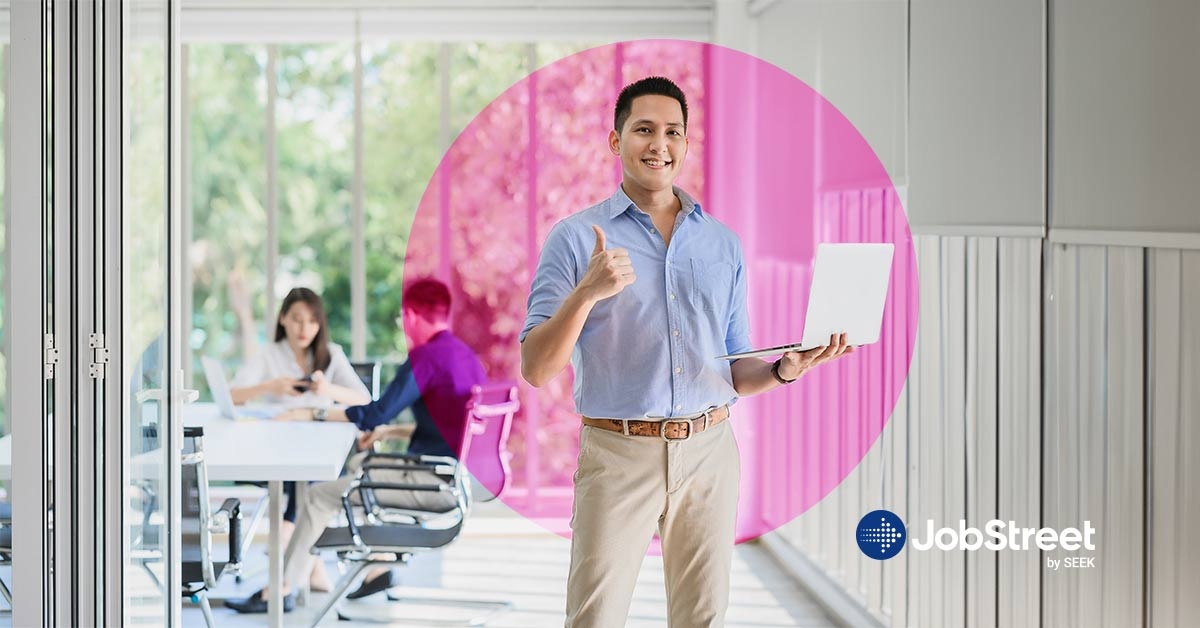
With business casual, formal suits are out while polos, T-shirts, jeans, and khakis are in. But when following this dress code, prioritize a professional look even when incorporating casual or comfortable clothing items. Here are some tips on how to select clothing pieces for your business casual outfit.
Shirts
There are different types of shirts acceptable for business casual outfits. A T-shirt or polo shirt can be appropriate, depending on the business. A button-down or button-up shirt is a safe bet for business casual. The grandad collar shirt is also a popular choice. This collarless shirt gives off a timeless vibe that's just the right amount of casual and formal. For shirts, neutral shades and solid colors work best. Avoid funky prints or neon shades.
Pants and trousers
Pants and trousers should always complement the look of your top. For example, if you're wearing a blazer over a round T-shirt, tailored pants can balance out the casualness. Meanwhile, a more formal shirt can be balanced with chinos.
Dress pants are the modern term for slacks. Depending on how you pair them, they can be formal or informal. These are a great way to start your business casual look because they're versatile.
Chinos differ from khaki pants. While khakis are defined by their color, chinos come in different hues. They are also more lightweight because of their cotton material. Chinos have a tailored cut and apparent stitches, making them more elegant.
Some companies don't consider jeans or denim pants as business casual. But many allow these due to their comfort. Many Filipinos commute to work, making jeans a practical choice. Here are several tips when wearing a pair of jeans to avoid looking too casual:
- Pair it with a collared or grandad collared shirt instead of a plain T-shirt.
- Partner it with a semi-formal belt.
- Always tuck your shirt in.
Jackets and blazers
Dark-colored blazers can fall under formal business wear. Opt for light-colored or patterned blazers to make your outfits more casual. Patterns like plaid, pinstripe, or herringbone are acceptable. Navy blazers are known as the king of business casual jackets because you can pair them with just about anything: shirts, jeans, button-collared shirts, and even sneakers.
Shoes
Some examples of shoes for a business casual look include loafers, boots, bluchers, and sneakers. Avoid colorful sneakers and go for neutral-toned pairs. It's also a good idea to check if your company allows casual footwear or if they have any specific guidelines regarding shoe types. If your workplace permits, dress sneakers can be a stylish and comfortable option.
When choosing shoes, go for comfort and functionality, while ensuring they coordinate well with the rest of your outfit. Also, make sure that your footwear is clean, in good condition, and polished when necessary. This can help you maintain a professional image.
Accessories
For men's accessories, the rule of thumb is to keep things muted. Don't wear anything too loud or flashy unless your workplace allows it. Accessories should also complement your outfit or add a personal touch to it.
A classic black or brown leather belt with a gold or silver buckle is a good choice. The general consensus is that it should match your shoes. For example, if you're wearing brown loafers, a brown belt can help you create a cohesive look.
Many don't wear ties in a business casual setting. If you choose to wear one, make sure it matches the overall look and feel of your outfit. Light-colored, striped, or mottled ties are acceptable for a business casual look.
Neutral or dark-colored socks that match your pants and shoes are safe choices. You can also wear patterned or two-toned ones to add a bit of personality to your outfit.
A watch is a classic accessory that can add a personal and sophisticated touch to your attire. For a business casual look, it's best to go with an analog watch with a leather or metal wristband. Avoid wearing sporty, digital, or bright-colored watches that may be too casual for the workplace.
There are other accessories you can wear to enhance your business casual outfit. Cuff links can elevate your look if you're wearing a shirt underneath a suit jacket. Simple chain bracelets and necklaces are also acceptable.
Business casual outfit combinations for men
Here are several combinations that you can try:
- For the classic business casual look, pair a light-colored button-down shirt with gray dress pants and a sport jacket in a different color. Wear a tie, and go for brown shoes and a brown belt.
- Wear a solid-colored T-shirt under a sport jacket for a more casual look. Pair it with chinos, boots, and a belt.
- A polo shirt plus dress pants and an unbuttoned sport jacket is a great combination for a business casual outfit. Add a belt to complete the look. Loafers or dress shoes, like Oxfords, can complement the ensemble as well.
- You can swap the loafers or dress shoes in the previous combination for minimalist sneakers for an even more relaxed vibe. You can also do away with the belt.
- You can wear a knit sweater, collared shirt, dark-colored denim jeans. Complete the look with dress shoes and a belt for a more put-together appearance.
Examples of business casual attire for men
Here are some examples of business casual attire for men:
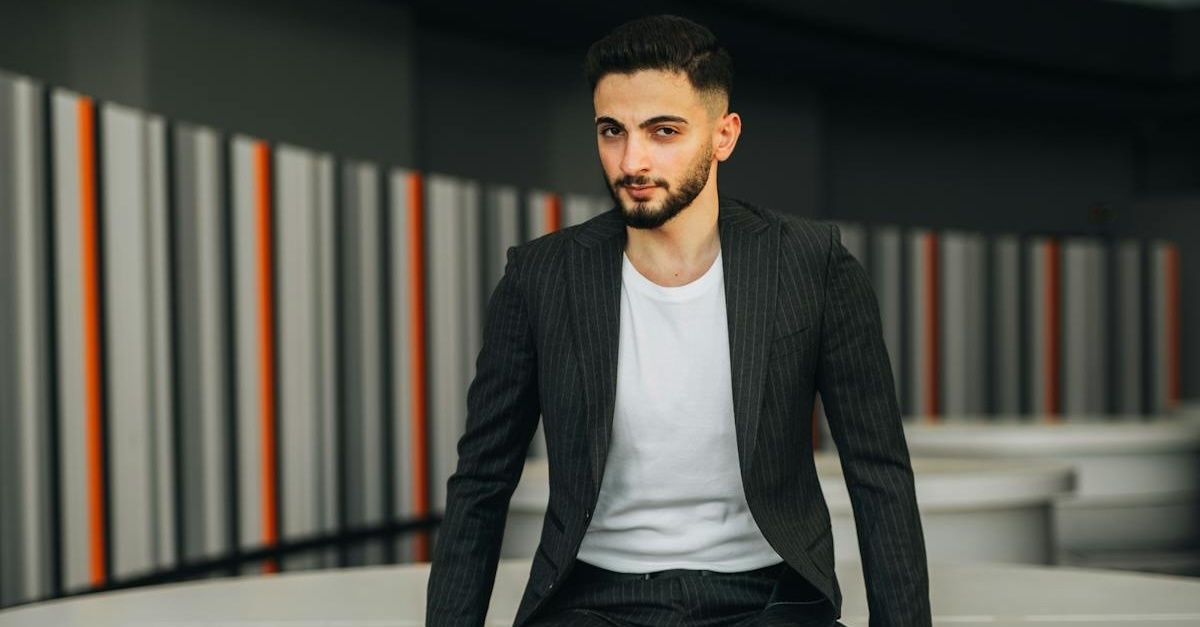
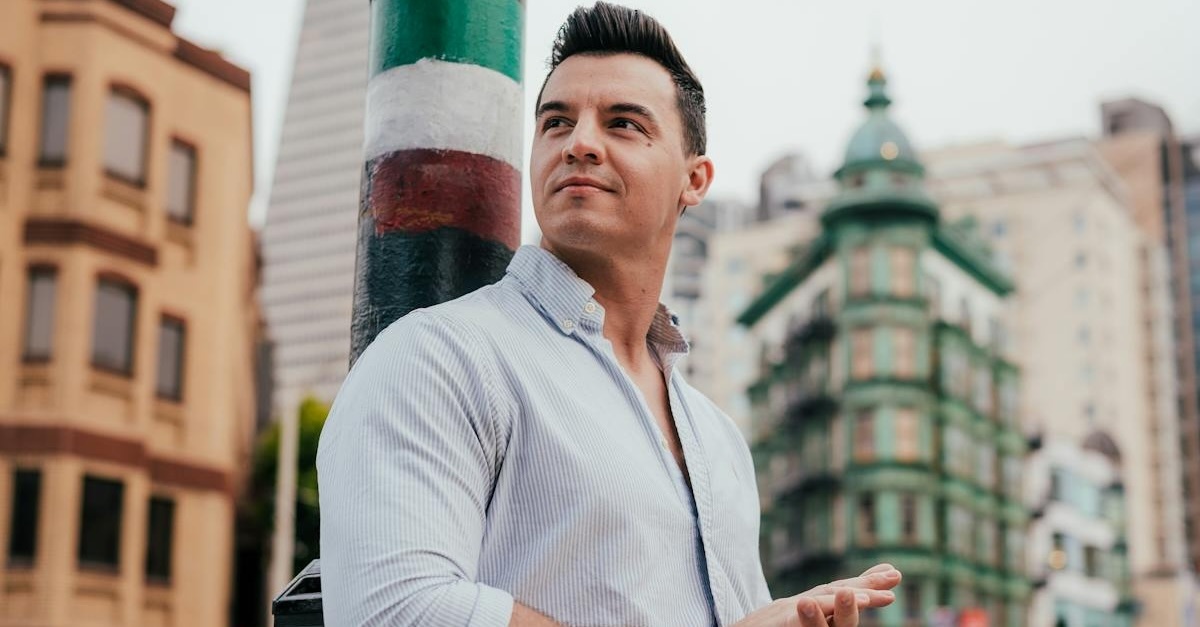
Business casual attire for women
Business casual outfits allow women a little more freedom in how they dress at work. Instead of wearing heels daily, for instance, they can opt for flats or boots. They also have numerous choices, from dresses and blouse-and-skirt combos to pants and collared shirts. Here some tips to help you make better outfit choices:
Tops and blouses
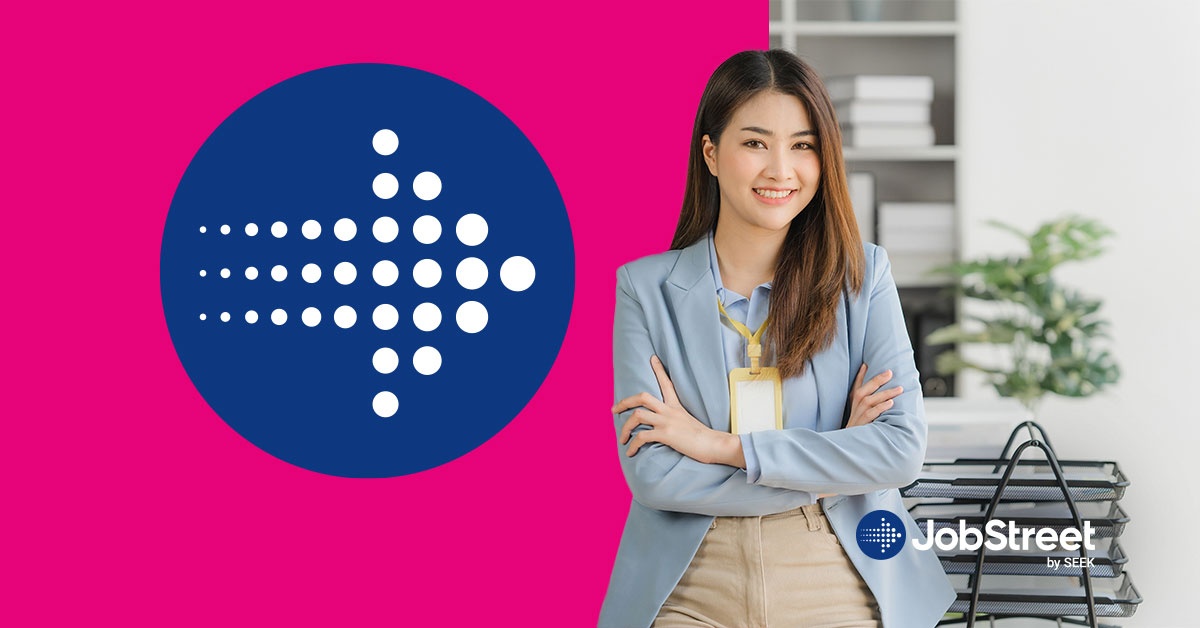
The go-to top for women in business casual is a blouse. Blouses can be short-sleeved, long-sleeved, or sleeveless. When wearing a sleeveless blouse, it's a good idea to pair it with a cardigan or blazer, especially if you're attending a meeting. Ladies can also take men's business casual tops and make them work with feminine accessories, such as necklaces or earrings. These tops often include button-down, button-up, and polo shirts.
When choosing a top or blouse for business casual wear, steer clear of pieces that are see-through, too tight, or oversized. And while patterns and prints are always a fun way to add personality to your outfit, it's best to stick to more subtle designs and muted colors in a professional setting. Opt for more modest cuts and styles as well.
Skirts and dresses
Here are some skirts and dresses you can experiment with:
- A-line skirts are usually knee-length and perfect for pear-shaped body types.
- Midi skirts fall below the knee and can make your lower body appear longer.
- Asymmetrical skirts can add some edge or style to your look if you're feeling adventurous.
- Neutral-colored dresses are always a safe bet.
Pants and trousers
Choose business casual pants and trousers that are made of breathable fabric to accommodate the hot and humid weather. Linen or a cotton-polyester blend are good options. Denim pants may also be acceptable if they’re paired with more formal tops or blouses. Here are a few styles you can try:
- Tapered pants are between skinny and straight pants. You can pair these with various tops and blouses for a versatile look.
- Flare pants were popularized in the '70s but recently became a staple closet item. These are perfect with open-toe high heels.
- Palazzo pants are similar to flare pants, but they're more relaxed and flowy. Wear a fitted top and a pair of heels for a polished look.
- High-waisted pants give you an hourglass shape, making them a flattering choice for business casual. You can pair them with a tucked-in blouse.
A good rule to remember when assembling your outfit is that wide-style pants shouldn't reach the ground, while fitted pants and jeans should be just above your ankle.
Jackets and blazers
Jackets and blazers are the perfect way to complete a business casual look. They come in handy for spontaneous meetings and events and act as your coverup when the air conditioning gets chilly in the workplace. Here are several styles to consider:
- Cape blazers cover your shoulders but have a flowy, cape-like silhouette that adds a touch of elegance to your business casual outfit. Wear with a blouse and tailored trousers for a polished look.
- Double-breasted blazers can make for a powerful business casual look when you team it with a crisp white button-up shirt, tailored pants, and high heels. The structured silhouette adds a touch of sophistication to your outfit, and the double-breasted design exudes confidence and authority.
- Linen blazers are perfect for the summer because of their lightweight material. You can wear them with a fitted top, dark denim jeans, and pumps for a work-appropriate look.
- Cropped blazers give off a more relaxed vibe than their full-length counterparts. For a business casual outfit, pair a cropped blazer with a sleeveless top, tapered trousers, and loafers.
Shoes
Unlike business formal, women don't have to wear heels every day. Instead, they can choose from various styles. These include kitten heels, mules, loafers, pumps, flats, boots, and even sneakers if the company allows it.
Accessories
When it comes to accessories, the goal is to choose pieces that add a professional touch to your business casual outfit. An elegant watch with a minimalist design and a leather or metal strap is a great accessory that can elevate your look. Adding a statement necklace or a pair of earrings can also enhance your outfit, but make sure these aren't too flashy or distracting. Making sure your bag complements your shoes can likewise make you look more put-together.
Business casual outfit combinations for women
Aside from the previous pairings, here are business casual examples you can try:
- Wear a tailored blouse with wide-leg pants, a thin belt, and pointed-toe flats for a classic look.
- Pair a long-sleeved shirt with a pencil skirt and heels for a simple business casual outfit.
- Make a casual T-shirt work-appropriate by wearing it with a blazer, dark-colored jeans, and high heels or ankle boots.
- Combine a sleeveless blouse with a knee-length skirt and block heels, and layer a lightweight cardigan over it.
Examples of business casual attire for women
Here are some examples of business casual outfits for women:


Gender-neutral business casual attire
A gender-neutral business casual outfit is a work-appropriate look that people can wear regardless of their gender identity or expression. It doesn't restrict you to the norms of how a man or woman should look in a professional setting. Rather, it gives you more freedom to express yourself through your clothes. Gender-neutral clothing is becoming more popular, especially with today's perspectives on gender and fashion. It's inclusive and progressive, and many companies are now accepting a dress code that doesn't follow gender stereotypes.
Examples of gender-neutral business casual attire
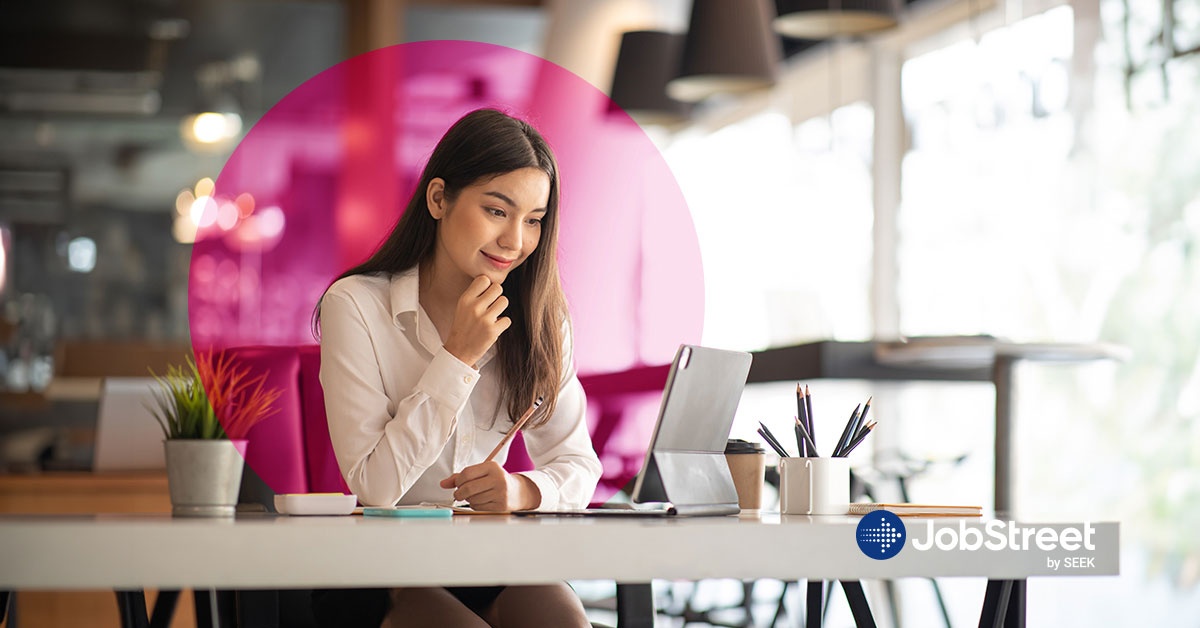
Many pieces can be a part of a gender-neutral business casual clothing style. For tops, button-downs, button-ups, polo shirts, and T-shirts can all serve as a base layer. You can wear a blazer, vest, sweater, or jacket over these pieces for a more formal look. For bottoms, tailored trousers, tapered or straight-cut jeans, khakis, and chinos are all good choices.
Popular choices for footwear include loafers and dress sneakers. To complete your outfit, you can wear a classic leather belt and a minimalist watch. You can also accessorize with simple jewelry to round off your look. Here are several gender-neutral business casual examples:
- Pair a button-down shirt with a blazer, dark-colored denim jeans, and loafers.
- Wear a fitted shirt underneath a sport jacket. Pair tailored trousers and dress sneakers to complete the look.
- Combine a light-colored polo shirt with an open lightweight cardigan in a darker hue, slim-fit jeans or khakis. Finish the look with a brown belt and dress shoes.
What not to wear in business casual settings
A business casual outfit should be professional and not too casual. Items like shorts, flip-flops, sandals, distressed denim, and ripped jeans aren't appropriate. Avoid athletic wear, like sweatpants, track pants, jerseys, and gym clothes. Clothes that are wrinkled, too tight or loose, revealing, and worn out should also not be a part of your ensemble. When it comes to accessories, steer clear of excessive or flashy pieces. Examples are chunky statement necklaces, oversized hoop earrings, and stacks of bracelets.
How to dress for specific occasions
Here are tips on how you can dress appropriately for specific situations:
Business casual attire for interviews
When choosing clothes for interviews, go for pieces that can help you make a good impression. Neutral-colored clothes that are appropriate for the position you're interviewing for are ideal. For instance, if you're interviewing for a more formal role, such as in finance or law, choose a tailored suit in a dark color or a solid-colored dress with a blazer. Pair these with dress shoes and simple accessories.
Business casual attire for conferences and meetings
Consider the venue and activities when deciding what to wear to conferences and meetings. If the event is in a hotel or conference center that's more formal, go for a more conservative look. A button-up shirt with a sport jacket, tie, dress pants, and Oxfords is a good ensemble. If you're presenting, a pantsuit can help you make a lasting impression on your audience. If the event is more informal or outdoors, you can tone down your outfit. For instance, you can wear a blouse or shirt, tailored pants, and dress sneakers.
Business casual attire for networking events
First impressions are essential if you're meeting strangers and potential future colleagues. At networking events, appearances are important. Wear a suit, tie, and shirt with loafers or dress shoes. You can opt for a skirt and blouse for a more feminine look. Make sure the skirt is below the knee and the blouse is on the conservative side.
Business casual attire for casual Fridays
With the weekend just hours away, casual Fridays are the best day to push the boundaries of your business casual attire. Pair dark jeans and a classic top with ballet flats, low heels, boots, or sneakers. Add a statement blazer or jacket to complete your outfit.
Tips for choosing business casual attire
Here are tips to help you choose the right pieces for a business casual outfit:
Find the right fit
The first thing to do to find the best items is to take your measurements, from the breadth of your shoulders to your exact shoe size. Next, list the items you want to purchase. It's important that these are versatile.
Check online stores like Zalora, Lazada, and Shopee for the best deals. Visit big department stores like SM or Rustans for other options. You can also try ukay-ukay places for bargain branded items.
Select appropriate colors
Wearing pieces in the right colors can make a big difference in your appearance. You can look more put-together and professional by sticking to neutral or muted tones like black, navy, gray, beige, or white. If you want a more polished ensemble, go for colors that complement your skin tone. This can make you look more attractive and boost your confidence. For instance, someone with a warm skin tone typically looks good in earthy hues like red, orange, and brown. A person with a cool skin tone tends to look better in shades of blue and green.
Choose the right accessories
Your top, pants, and blazers are just the foundations of your business casual outfit. The accessories are the finishing touch, but sometimes, they can make the most impact. Here are several tips on finding the right accessories:
- A belt can help you express your personality.
- You can play with different kinds of socks.
- A conservative watch is a must.
- Wear gold jewelry if you have a warm skin tone, and silver if cool.
- Choose a bag that isn't too heavy but big enough to carry an A4 folder.
Create a capsule wardrobe
The sole purpose of a capsule wardrobe is to have a budget-friendly closet of clothes for work. The items to include here need to be timeless and versatile. Follow these tips when creating a capsule business casual wardrobe:
- Get rid of clothes you never wear to make space for new items.
- Prioritize quality over quantity.
- Choose clothes that are easy to wash and maintain.
- Buy items that you can wear regardless of the weather.
Dos and don'ts of business casual attire
Here are important do's and don'ts when choosing and wearing a business casual outfit:
Basic guidelines to follow
Here's a short list of guidelines that can help you pull off a business casual look:
- Always look neat by wearing clean and pressed clothes and well-maintained shoes and accessories.
- Coming to work well-groomed.
- Choose skirts and dresses that are at least knee-length.
- Wear clothes that are age-appropriate and fit you properly.
- Simple accessories and neutral-colored pieces with minimal patterns and prints are best.
- Go for clothes that are breathable and comfortable, especially if you take public transportation.
Mistakes to avoid
The biggest mistake you can make is leaning too heavily on the casual side of business casual. To avoid this, choose a formal look and then add casual touches to it. For instance, you can swap the button-down shirt in a formal suit for a round T-shirt or polo shirt. It's also important to remember the items we listed earlier that aren't appropriate for this dress code. Here are some of the common mistakes to avoid in business casual:
- Wearing ill-fitting clothes can make you look sloppy.
- Not paying attention to the color palette you're using can affect your overall appearance.
- Putting on too many layers can make you look bulky and may be uncomfortable given the hot Philippine climate.
Dressing for success
People largely base their first impression of you on your appearance. That's why it's important to dress for success, especially when you're going to a job interview or a business meeting. Dressing appropriately shows respect for the occasion. It also shows your professionalism and attention to detail. This can have a positive impact on the way other people perceive you, which may help you land the job or close the deal.
Dressing for success also affects your performance and self-image. A 2015 study found that wearing formal attire can increase a person's cognitive ability because they feel more powerful in it. When you take time to dress well, you're more likely to act with confidence. This can help you perform better at work and appear more capable, opening more opportunities for career advancement.
Summary
Business casual is the best of both worlds – it's casual enough to make you feel comfortable and professional enough to make you ready for meetings and interviews. When following this dress code, it's important to find a balance between business and casual. Dressing in business casual can help you make a good impression in the workplace.
FAQs
Here are answers to common questions about this topic:
- What is business casual attire? It's somewhere between formal and informal, comfortable and professional. Business casual attire is neat, presentable, and work-appropriate.
- What is the difference between business casual and business formal attire? Business formal is the classic business look that typically requires a three-piece suit, long evening dresses, and a conservative style. Business casual allows you to express your personality and dress for comfort while still wearing clothes that are work-appropriate.
- What is considered appropriate business casual attire for men and women? A suit jacket, collared shirt, and chinos are a classic combination for men. For women, a blouse and dress pants or a knee-length solid-colored dress are excellent choices. Popular footwear options include dress shoes, heels, loafers, boots, and dress sneakers.
- Can I wear jeans in a business casual setting? While jeans aren't typically part of a business casual dress code, many companies allow them as long as they're styled appropriately. Check with your employer if you can wear jeans to work. Choose dark wash jeans that fit well and are not distressed. Then, pair these with a more formal top and shoes to balance out their casualness.
- Are sneakers acceptable in a business casual setting? Like jeans, more companies allow sneakers in business casual settings. Choose dress sneakers in neutral tones and with a minimalist design to keep a professional appearance.
- How can I dress for success in the workplace? Choose professional attire that reflects your personal style and aligns with the company culture and dress code. Well-tailored suits or dress pants with blouses or button-down shirts can make you stand out. Add subtle accessories like a statement watch or a simple necklace to enhance your outfit.
- What is not business casual? While business casual allows for some flexibility, there are certain items that are too casual for the workplace. These include clothing with large logos or graphic prints, shorts, distressed or ripped jeans, and overly revealing pieces. Athletic wear and its accompanying gear are also not appropriate for business casual. When it comes to footwear, flip-flops, sandals, rubber shoes, and flashy sneakers aren't advisable.
